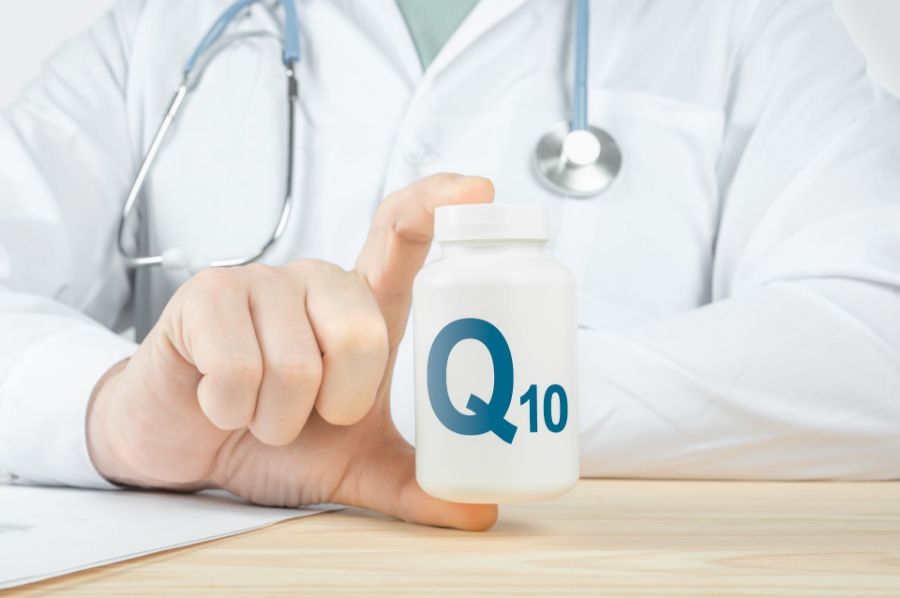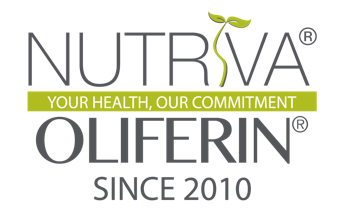
By Nutritionist Avril
Coenzyme Q-10 (CoQ-10 or Ubiquinone) is a quinone that occurs naturally in most aerobic organisms. It was discovered in 1940 and isolated in 1957 from the mitochondria of beef heart. Coenzyme Q, CoQ, CoQ10, Ubiquinone, Ubiquinone-Q10, Ubidecarenone, and Vitamin Q10 are all names for Coenzyme Q. CoQ10, which has 10 isoprene repetitions, is the most prevalent form of CoQ. CoQ10 is present in human tissues, with the largest concentrations found in organs with high metabolic rates, such as the heart, kidney, and liver.
Coenzyme Q-10 acts as an energy transfer molecule in the electron-transport chain, which is responsible for the synthesis of adenosine triphosphate (ATP). Because ATP is required for most cellular processes, CoQ10 is vital for the health of all human tissues and organs. It also functions as a lipid antioxidant, limiting free radical formation and preserving proteins, lipids, and DNA.
The concentration of CoQ10 declines in illness situations associated with increased reactive oxygen species (ROS), leading to respiratory chain malfunction and impaired cell efficiency. To neutralise free radicals, humans have evolved a sophisticated antioxidant defence system that includes CoQ10 and other antioxidants obtained from nutrition, antioxidant enzymes, metal-binding proteins, and antioxidant phytonutrients present in plant meals.
CoQ10 supplements may have potential benefits in preventing or treating a variety of conditions, including cardiovascular disease, high blood pressure, cancer, periodontal diseases, mitochondrial disorders, radiation injury, obesity, diabetes, Parkinson's disease, AIDS, gastric ulcers, allergy, migraine headaches, kidney failure, muscular dystrophy, and ageing. CoQ10 is essential for improving the immune system and physical performance. It is derived mostly from dietary sources such as oily fish, organ meats, and whole grains. Supplementation, on the other hand, may be required for those with certain health issues.
CoQ10 is available in a variety of forms, with daily doses ranging from 30 to 200 mg. It is more easily absorbed when combined with an oil or fat-containing meal. The therapeutic results may take up to eight weeks to manifest, and side effects such as diarrhoea and dermatitis are possible. CoQ10 level in the body diminishes with age, and it is present in cell membranes, particularly mitochondrial membranes, in numerous organs.
To summarise, Coenzyme Q10 is a critical component in the body that is involved in energy generation and antioxidant defence, with potential advantages for a variety of health concerns.
References:
1. Battino M, Ferreiro MS, Bomparde S, Leone L, Mosca F, Bullon P. Elevated hydroperoxide levels and antioxidant patterns in Papillon-Lefevre syndrome. J Periodontol. 2001;72:1760–6.
2. Battino M, Bullon P, Wilson M, Newman N. Oxidative injury and inflammatory periodontal diseases: The challenge of antioxidants to free radicals and reactive oxygen species. Crit Rev Oral Biol Med. 1999;10:458–76.
3. Saini R, Saini S, Sharma S. Antioxidants accelerates cellular health. Int J Green Pharm. 2010;3:212.

